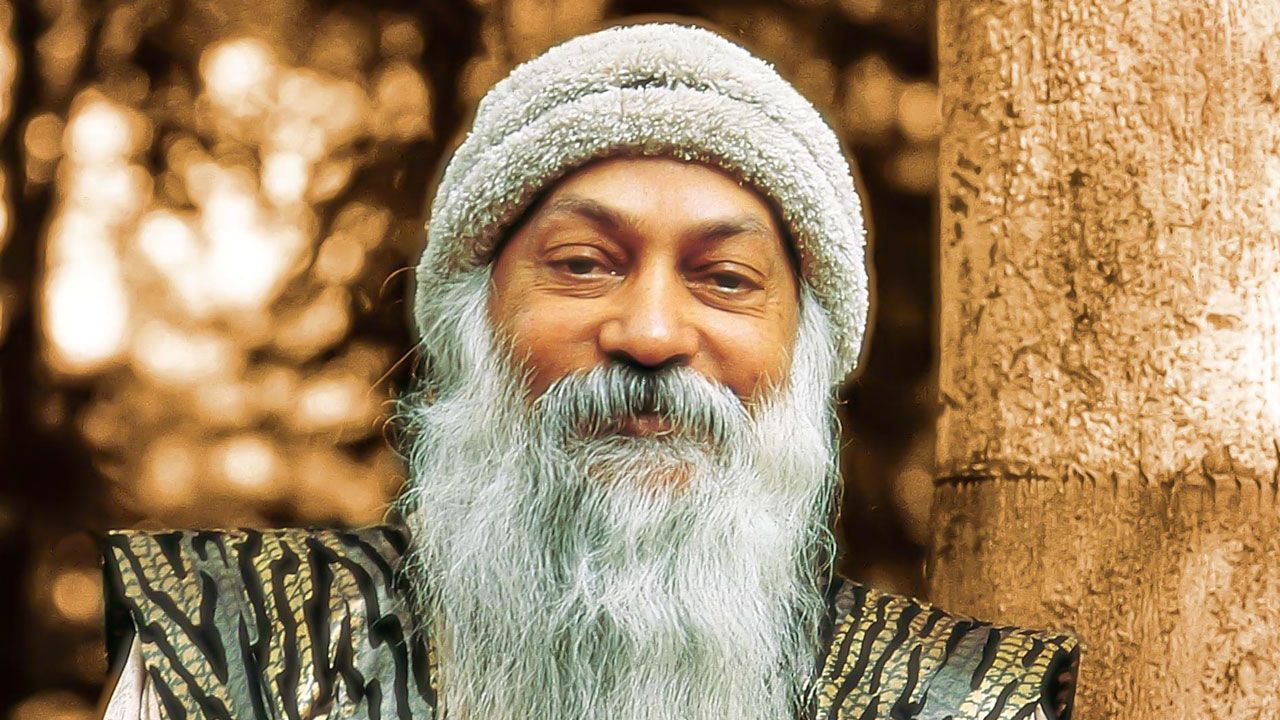Ganesh: The Elephant-Headed Hindu God of Obstacle Removal
Aug 13, 2025
Ganesh is often called the remover of obstacles. But what that really means is he clears what’s false. He blocks what isn’t rooted, and he delays what isn’t ready. His presence demands integrity. When he shows up, it's to hold you accountable to what you say you want.
In every tradition that honors him, Ganesh comes first. Before contracts, before ceremonies, and before creating something new. Beginnings require weight, discernment and focus, along with the willingness to let go of the parts of you that aren’t built to carry what’s next.
Ganesh keeps you from crossing unprepared. His broken tusk, his wide ears, his full belly, each detail tells a story about what it takes to move forward.
This article walks through the symbolism, the myths, and the deeper teachings behind Ganesh.
Who is Ganesh?
Also known as Ganapati, Ganesh is the one who stands at the entrance of every beginning, ready to guide you through. His elephant head symbolizes wisdom and the ability to see beyond. His belly represents the capacity to hold all experiences like joy, struggle, chaos, and triumph.
His four arms carry an axe to cut through illusion, a rope to pull seekers toward purpose, sweets as rewards for discipline, and his broken tusk is a symbol of sacrifice. This is a reminder that clarity comes when you’re courageous enough to let go of what no longer serves.
Ganesh’s presence is felt across Buddhist traditions, Tantric forms, Southeast Asian cultures, and Tibetan Buddhism. He’s a universal reminder that every obstacle is his lesson, every challenge his test, and every step forward shapes the strength to rise stronger, clearer, and more rooted in purpose.

A painting of Ganesh hanging in my living room.
The Birth of Ganesh: Hindu Texts & Mythological Origins
In Hindu tradition, Parvati the Goddess, the consort of Lord Shiva, represents feminine power, sexuality, discipline, and devotion. She’s defined by the choices she makes with her body, her space, and her boundaries.
Ganesh was not born through divine intercourse. He was created by Parvati alone. She took the dust from her skin, literal remnants of her physical self, and shaped a child. In some versions, it’s turmeric paste, sandalwood, clay from the river, or scrapings from her body. The materials vary, but the message is consistent, she created him from herself, with purpose. She breathed life into him to protect her.
Parvati needed privacy. She was preparing for a sacred bath. She didn’t want to be interrupted, so she created someone she could trust to enforce the space she needed. She gave Ganesh a clear role, to stand guard at the entrance. Do not let anyone in.
The core message here is about claiming full authority over who gets access to her space, her energy, even inside her own home. When Shiva returned and attempted to enter, Ganesh blocked him. He didn’t know who Shiva was, but it didn't matter. His job wasn’t to assess importance, his job was to protect the boundary his mother had set.
Shiva, enraged at being denied, responded with force. He beheaded Ganesh. Parvati didn’t accept what happened. She demanded that Shiva take full responsibility, not just by bringing Ganesh back to life, but by recognizing the seriousness of what he destroyed. Shiva restored Ganesh and, as part of that reparation, gave him the head of an elephant, a symbol of strength, wisdom, and protection. He then declared Ganesh the guardian of all thresholds, meaning no new beginning, ritual, or sacred entry would happen without Ganesh’s blessing.
The Elephant Head: How Ganesh Was Reborn
Ganesh wasn’t born with an elephant's head. He was born human. So when Shiva, unaware of who the boy was, beheaded him in a moment of rage for guarding his mother’s privacy, what followed was a divine upheaval.
Parvati demanded restoration, not just of his life, but of dignity, identity, and purpose. Shiva, recognizing the weight of what he’d done, vowed to bring the child back. But not just in any form. They needed a symbol, one that spoke to divine strength and wisdom.
An elephant’s head was chosen deliberately for its symbolic significance. In Hindu symbolism, elephants represent mental clarity, memory, loyalty, and steady power. These are exactly what’s needed to guide people through transitions and new beginnings. The elephant doesn’t charge at every obstacle. It waits, it watches. Then it moves forward with unstoppable grace.
Ganesh’s elephant head is a visual reminder that rebirth doesn’t mean returning to what was, but evolving into something stronger.
The Symbolism of the Broken Tusk

Look at almost any image of Lord Ganesha and you’ll notice that one tusk is intact, while the other is missing. It’s a symbol of how far he’ll go for purpose.
According to legend, the sage Vyasa was ready to dictate the Mahabharata, one of the longest and most important epics in history. But he needed a scribe. Not just any scribe, someone with precision, focus, and stamina. Ganesha agreed to be the scribe under the condition of uninterrupted dictation; Vyasa had to speak without stopping, and Ganesha would write without pause.
Midway through, Ganesh’s writing tool snapped. And instead of halting the work, he snapped off his own tusk and kept going.
The broken tusk represents doing what’s needed to honor a commitment. When tools fail, when plans fall apart, when convenience vanishes you don’t walk away. Ganesh’s broken tusk is a reminder that clarity sometimes requires letting go of comfort.
The Symbolism & Iconography of Ganesh, The Remover of Obstacles

- Elephant Head & Human Body: Ganesh’s elephant head represents deep wisdom. But that wisdom doesn’t float in the clouds. His human body grounds him in action. The message is that insight is useless if you can’t embody it. Real wisdom lives in how you move through the world, not just how you understand it cerebrally.
- Large Ears: His large ears are functional symbols of how leaders listen. The size represents an expanded capacity to absorb wisdom, but more importantly, it shows the value of listening deeply, not reactively. In a world that talks over itself, Ganesh reminds us that growth starts by hearing what’s not being said. Discernment lives in the details that his big ears are designed to catch.
- Small Eyes: Where the ears zoom out, the eyes zoom in. Ganesh’s small eyes symbolize laser-sharp focus. While large eyes might take in the whole picture, small eyes cut through distraction and fixate on what matters. It’s a reminder that clarity doesn’t mean seeing everything, but seeing what counts and keeping your gaze there.
- Pot-Bellied Form: His belly is symbolic of prosperity and the strength to digest life’s experiences, the good, bad, easy, or difficult. It’s also to hold emotional extremes like joy, pain, success, and failure without letting them throw you off center.
- Four Arms: Each one of Ganesh’s four arms holds a tool or gesture that teaches something about how to move through life with intelligence, consistency, and courage. They represent four core capacities that anyone crossing a threshold needs to embody, the ability to redirect, the ability to commit, the ability to receive what’s earned, and the ability to face the unknown without collapsing.
- Elephant Goad (Ankusha): This is traditionally used by elephant handlers to guide and steer elephants. This sharp hook represents Ganesh’s power to gently push you forward. Spiritually, it’s a reminder that true guidance isn’t always soft. Sometimes it prods, sometimes it redirects you with uncomfortable clarity.
- Broken Tusk: While transcribing the Mahabharata, the world’s longest epic, Ganesh promised he would write continuously, without pause. When his pen broke mid-way, he didn’t stop. He broke off his own tusk and kept writing. He adapted, immediately, decisively. The broken tusk shows what it means to stay with something when it gets hard.
- Laddu (Sweet): The sweet in his hand is a reward for discipline. The laddu symbolizes the sweetness that comes after effort.
- Abhaya Mudra: His open palm, facing forward is the Abhaya Mudra, the gesture of protection and fearlessness. It means “no fear.” It’s Ganesh holding space while you confront hard truths, reminding you that power isn’t the absence of fear but acting, no matter what.
The Mouse Mount (Mushaka) & Its Meaning

Ganesh’s vehicle is a mouse. In traditional lore, this mouse was once a divine being, a skilled musician whose arrogance and unchecked hunger led to a fall from grace. Cursed into the form of a mouse, it became wild, destructive, and insatiable, gnawing through sacred offerings, stealing food, and creating disorder wherever it went.
It was Ganesh who finally subdued the chaos. But he didn’t kill the mouse or cast it out. He climbed on its back. The weight of his body, the weight of grounded wisdom, was enough to still the mouse’s frenzy. From that point on, the mouse carried him.
The mouse represents our lower impulses, distraction, constant craving, ego-driven thought, emotional reactivity. Mice dart from one thing to the next. So does an untrained mind. A craving unchecked doesn’t stay small, it grows. A thought repeated without awareness becomes a loop. A desire left unexamined becomes an obsession.
Ganesh riding the mouse is about more awareness through discipline. He doesn’t kill desire. He places himself above it, literally. He stays steady, letting the mouse move, but never letting it lead.
You don’t get rid of your desires, your restlessness, your tendencies. You learn how to carry them without being ruled by them. You sit above them with clarity and intention. You feel the pull, but you choose the direction.
The real obstacle is not desire, it’s desire without leadership. Ganesh riding the mouse is the visual reminder that your mind and your cravings are meant to serve you, not sabotage you. You lead, they follow.
Ganesh’s Many Forms Across Hindu & Buddhist Traditions
Dancing Ganesh: The Power of Joyful Momentum

In many Hindu traditions, Ganesh is also shown mid-step, hips swayed, arms extended, body alive with motion. This is Nritya Ganapati, the Dancing Ganesha. A form not frozen in meditation, but fully immersed in the rhythm of life.
Dancing Ganesh holds a drum in one hand and gestures blessings with the other. His body moves, but his eyes stay focused. This form teaches the ability to stay centered while moving, to stay in your body even when the world is chaotic, unpredictable, or heavy.
Dancing Ganesh doesn’t bulldoze through obstacles, he moves with them, around them. Sometimes over them. His dance teaches that not every challenge is meant to be wrestled into submission. Some need to be navigated with timing, rhythm, and responsiveness. His energy brings fluidity to places that have hardened. It shows that resilience isn’t always about grit, it’s about adaptability.
Red Ganapati (Maha Rakta)

Red Ganapati is shown with red skin, seated or dancing in a wide stance that grounds his weight low to the earth. His limbs are strong, sometimes depicted with eight or more arms, each holding a weapon or ritual object, an axe, a trident, a noose, a broken tusk. These are functional tools used to break through delusion, ego, and avoidance.
His eyes are wide and intense. Not warm, but piercing. His gaze doesn’t look away from what’s uncomfortable, it holds it until it breaks. He wears red clothing or is wrapped in red energy, sometimes surrounded by flames or seated on a throne made of raw elemental power. Red, in this form, symbolizes blood, heat, effort, and the physical force of transformation.
Maha Rakta Ganapati is called upon when things need to be dismantled. When your habits are keeping you stagnant, and when your attachments are holding your growth hostage. He brings sharpness to moments of denial. He brings endings when you refuse to let go.
In Tantric practice, Red Ganapati is linked to other prominent red deities like Kurukulla and Takkiraja. He is directly connected to the Muladhara (root) chakra, the foundation of survival, structure, embodiment, and stored fear. This is where stagnation tends to sit, in the body, in your relationship to safety. Before you can rise into higher energy, your root has to be stable and activated.

Phra Phikanet (Thai Buddhism)
In Thai and Cambodian traditions, Ganesh is called Phra Phikanet. In this form, he is the force that makes meaningful creation possible.
Phra Phikanet is typically depicted with elegant ornaments, seated or standing with poise, surrounded by tools of the arts, musical instruments, scrolls, blueprints, and offerings of flowers and incense. His energy is refined, precise, and alert. Phra Phikanet’s power moves quietly, through inspiration and right timing.
Phra Phikanet helps you bring ideas into form. He stills the noisy inner critic, he clears mental clutter, and he stabilizes intention. If your creativity feels scattered or disconnected from purpose, invoking Phra Phikanet helps with re-aligning with flow. He works through subtle adjustments, like an idea landing clearly, the right collaborator appearing, the timing suddenly feeling right.
Worship & Devotion to Lord Ganesh
Ganesh Chaturthi: The Grand Festival

Ganesh Chaturthi is one of the most celebrated Hindu festivals among Hindus, especially in Maharashtra, India. It typically falls between August and September (the Hindu month of Bhadrapada), depending on the lunar calendar. In 2025, it will be observed on August 27.
This festival is a ten-day public and personal declaration that you’re ready to clear the path, remove what’s blocking you, and make space for something new. Ganesh Chaturthi marks the birth of Lord Ganesh. As you’ve already read, Ganesh was created by Parvati and later beheaded by Shiva.
So this festival is about the reclaiming of power after a breakdown. It’s a celebration of renewal after rupture and the right to protect what matters.
What Happens During the Festival
Day 1: Installation
It begins with Prana pratishtha, the ritual of invoking life into the Ganesh idol. Families bring clay statues of Ganesh into their homes or community spaces, setting up elaborately decorated altars. You are welcoming Ganesh into your space, physically and energetically.
Daily Worship (Days 1–10):
Offerings are made daily:
- Modak (a sweet dumpling, said to be Ganesh’s favorite)
- Fresh flowers, including red flowers
- Coconut and jaggery
- Lamps and incense
Mantras and prayers like the Ganapati Atharvasirsha are chanted. For ten days, homes are cleaned, clutter is cleared, and focus is sharpened. This is about clearing the internal space as much as the external.
In many cities, especially in Mumbai, massive public statues are installed and worshipped. Drumming, dancing, and processions take over the streets. It’s everyone choosing to come together in the spirit of clearing what’s stagnant or unfinished.
The Final Day: Visarjan
Hindus carry Ganesh out of homes and communities and take him to bodies of water for visarjan (immersion). You place the idol into the river, ocean, or lake, and with it, all that you are ready to release blocked creativity, old fears, unspoken resentments, and hesitations about your path. The idol dissolves, but the intention remains.
This ritual teaches impermanence. That even protection must evolve, and that even sacred attachments must be surrendered when their work is done.
Temples & Places of Worship
Siddhivinayak Temple - Mumbai, India

In the thick of Mumbai’s fast pace stands Siddhivinayak Temple, a structure that holds stillness in the middle of noise. Built in 1801 by a childless couple who prayed for fertility and later honored their answered prayer by constructing this temple, Siddhivinayak was never meant to be a monument. It was meant to be a thank you. That foundation, built on intimacy and devotion, still shapes the way people approach it today. Devotees come to prepare for what comes after the blessing. They come to align.
Ganesh's images and representations can be found throughout India, including the National Museum in New Delhi. “Siddhi” means success, but not success as luxury or status, success as fulfillment, as completion, as doing what you set out to do with integrity. “Vinayak” means the one who removes obstacles. Put together, this temple holds you in the moment before movement, when everything inside you wants to rush or avoid.
Kanipakam Vinayaka Temple - Andhra Pradesh, India

The Ganesh idol at Kanipakam came up from the ground, naturally formed, embedded in stone, and still partially submerged in water today. This makes it one of the few Swayambhu (self-manifested) Ganesh idols in India, and one of the most physically unique.
Three brothers, one blind, one deaf, one mute, were digging a well when they hit a stone. Water immediately gushed from the spot, and in that instant, all three were healed. That stone was the Ganesh idol, still visible today, still emerging slowly from the earth. Every year, devotees report that the idol appears to grow, rising further out of the water over time, without intervention.
People come to this temple to tell the truth, to admit wrongs, to return stolen items, and to confess actions that weigh heavily on their conscience. This is one of the few temples in India where devotees openly admit their mistakes in front of the deity.
Ucchi Pillayar Temple - Rockfort, Tamil Nadu, India

Located in Tiruchirapalli, Tamil Nadu, Ucchi Pillayar Temple sits at the very top of a 273-foot-high rock formation known as Rockfort. To reach it, you ave to climb over 400 steep stone steps barefoot.
By the time you reach the top, your body is quieted. Your mind has had space to strip away distractions. And then you see it, a clear, panoramic view of the Kaveri River, the city below, and wide open sky. The temple itself is small and simple. A tight stone sanctum where the idol of Ganesh sits, cool and grounded in the rock. Devotees bow their heads, rest their hands on the warm stone floor, and sit in stillness after the climb.
According to legend, this is where Ganesh ran with the pot of divine nectar (Amrita) during the Samudra Manthana, the churning of the ocean, a foundational story in Hindu cosmology. He ran here to keep it safe, and was later intercepted by Lord Vishnu. The story teaches when something sacred is in your hands, you may have to protect it with effort.
Shree Maha Ganapathi Temple - Kerala
Shree Maha Ganapathi Temple is located in Kottarakara, a quiet town in Kerala. Here, devotees believe that Ganesh listens when your intention is clear and your steps are consistent. The energy of the temple reinforces that if you want help, show up ready to act. This Ganesh doesn’t hand out blessings easily. He supports people who take responsibility and follow through.
One of the most important offerings here is unniyappam, a sweet rice cake made from jaggery, banana, and rice flour, fried in ghee. Offering it to Ganesh is a way of saying: I’ve done my part. Now walk with me. Many locals describe this temple as a place where karma is real. What you bring in, your mindset, your effort, your choices, shapes what you take away.
Ganesh Tok - Sikkim

Ganesh Tok is one of the smallest Ganesh temples in India. The sanctum itself is only large enough for one person to enter at a time. It sits over 6,500 feet above sea level, just outside Gangtok, Sikkim.
Visitors climb a narrow path to reach the temple, passing prayer flags fluttering in the mountain air. Once you reach the viewing deck attached to the temple, the landscape opens completely with snow-capped Himalayan peaks, valleys spread wide below, and clouds moving in slow, deliberate waves.
People come to Ganesh Tok when they need to step back. The physical distance from the city below mirrors the emotional distance needed when you’re too close to your own overwhelm.
Ganesh Mantras
“Om Gam Ganapataye Namaha.”
This mantra is one of the most widely used Sanskrit invocations to Ganesh. It’s built for focus, clarity, and mental readiness, especially when you’re about to start something that requires discipline, responsibility, or courage.
“Om”
This is the seed sound of creation, the most basic, stabilizing vibration. Chanting “Om” regulates breath, slows down scattered thought, and physically grounds you in the present moment. When said properly, you feel it in the chest and lower belly.
“Gam”
“Gam” is the bija mantra (seed sound) of Ganesh. This syllable is sharp, compact, and meant to break through mental resistance. When you repeat it consistently, it creates a kind of energetic pattern interrupt, pushing you out of spiraling thoughts and into conscious direction.
On a physical level, chanting “Gam” tightens the diaphragm and brings awareness to the core. It pulls your attention inward, back from distractions and into action.
“Ganapataye”
This word directly addresses Ganesh by his formal name: Ganapati, meaning “leader of the ganas” (the elemental forces or followers of Shiva). You’re calling on the force that organizes chaos, governs discipline, and protects what’s about to begin.
“Namaha”
This means: “I bow,” “I offer,” or “I align.” “Namaha” is an internal act of stepping back from ego and saying I’m ready to move forward, not from control or fear, but from steadiness.
My favorite version of this mantra is a remix by Mose & Sam Garret. It is absolutely beautiful:
Ganesh Offerings

- Modak: Modak is considered Ganesh’s favorite sweet, a delicate steamed dumpling made from rice flour and filled with freshly grated coconut and jaggery. It’s soft, intricate, and time-consuming to make. The outer dough tears easily and the inner mixture must be just right. It requires precision and patience. You only offer modak when you've put in the effort. It represents bliss earned through discipline.
- Laddu: Laddu is made from roasted chickpea flour or semolina, ghee, and sugar. Its golden color and dense texture make it a symbol of wholeness, nothing missing, nothing leaking, everything contained. When you place a laddu before Ganesh, what you’re really saying is: “I can hold this.” Laddu signals your willingness to carry something fully. It’s a commitment to steadiness, not chasing more, but managing what’s already here with maturity and structure.
- Durva Grass: In Ayurveda, durva is used to cool excess Pitta, the fire element linked to frustration, irritation, and overdrive. It’s used when you need to cool reactive thinking, settle mental heat, and return to long-term focus.
- Banana: A banana is a working person’s fruit. It’s accessible, honest, and doesn’t need embellishment. In many rituals, banana is also offered as part of a basic meal, honoring the fact that the body needs to be fed before anything else can be carried out. When you offer banana, you’re acknowledging the role of humility and simplicity in your process.
- Coconut: Coconut is not placed at the altar until it’s cracked. The act itself is striking, one solid hit to split the hard shell, revealing water inside, clear, untouched, and pure. The coconut is the ego. The outer shell is rigidity, resistance, and self-protection. The act of cracking it is a ritual of surrender. The water inside the coconut symbolizes inner purity, what’s been there all along but can only be accessed when you stop armoring yourself.
Conclusion
Ganesh is a god of wisdom, clarity, and beginnings. His role is to guard the threshold, not to make things easy, but to make sure you're ready. He is here to challenge your focus, test your foundation, and clear what’s in the way of real progress.
Ganesh shows up when it’s time to refocus, recommit, and rise with purpose. He ensures you have the strength, clarity, and discipline to move forward with intention.
So the next time you find yourself at a beginning, don’t just ask for the path to be cleared. Ask yourself if you're truly ready to take the next step, and let Ganesh meet you there.















